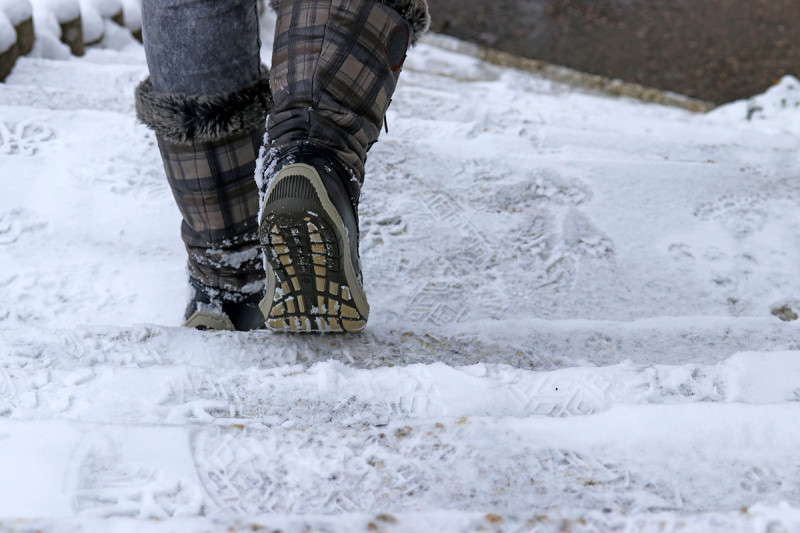
Boots with good traction can help prevent winter falls.
Whether you find yourself walking in a winter wonderland or caught unprepared when the weather outside is frightful, one thing’s for sure: It’s important to be extra careful as you move about in the cold. Studies have shown that falls increase during the winter, when snow and ice can make for treacherous treks, even just out the front door.

Jillian Hobson
People with cancer are at a higher risk for a fall than the general population, says Jillian Hobson, a senior physical therapist at Memorial Sloan Kettering who is board-certified in geriatric physical therapy. We spoke to her about why that is and how people can stay safe.
Why are people with cancer prone to falls?
Older adults with a history of cancer have anywhere between a 15 and 20% greater risk of falling compared to the general population of adults age 65 or older. That’s because cancer treatments, such as chemotherapy and radiation, can cause side effects that increase the risk of falls. These include weight loss, muscle weakness, numbness or tingling in the feet, dizziness, changes in eyesight, and fatigue. When you lose sensation in your feet, for example, it’s harder to find your balance during challenging situations, such as walking on a slippery sidewalk. It’s harder to know how to find your center of gravity.
Are there warning signs that a person may be at a greater risk for a fall?
There are several behaviors that suggest a person with a history of cancer may be at a greater risk for falling. The person may rely on furniture and walls for support when walking around the house. They may trip or have times when they almost fall. Someone who has fallen in the past or is at risk for falling may also avoid crowded environments, such as busy sidewalks, the grocery store, or other people’s homes. At MSK, outpatient physical therapists ask every patient, regardless of age, “Have you fallen in the past 12 months?” If they say yes, we try to prevent it from happening again.
What steps can people take to minimize their risk of falling?

Physical therapy supervisor Laryssa Buoneto (right) helps patients regain strength after cancer treatment.
There are many. First, secure throw rugs to the floor with nonslip backing. Clear hallways of clutter, and consider installing handrails in the bathroom or for outdoor stairs. Formulate a plan for snow removal during the winter, preferably before snow starts. During the winter, wear boots with good traction. People who are concerned about falling or have fallen in the past should speak to their doctor to see if physical therapy could help.
What should someone do in the event of a fall?
Today, there are many smartphone apps that can signal a fall to emergency responders. Some smartwatches also have an alert system that can tell when a fall has taken place and can call 911 for you if you are unable. It’s important that your cell phone stays with you at all times and stays on in case of an emergency.
In the event of a fall, people should contact their medical team immediately to determine if they need follow-up care or a referral to physical therapy. If physical therapy is recommended, the physical therapist will identify exercises that promote improved balance, strength, and stability. And because falls are not entirely preventable, a physical therapist will also teach strategies for safely getting up from the floor if a fall occurs.



